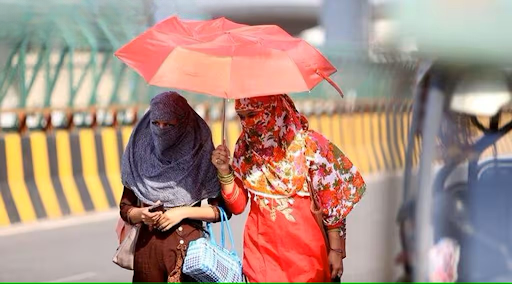Introduction
Heat waves in India happen mostly between March and June, especially in the northern and central regions, with temperatures often above 45°C. They are caused by weather patterns and human activities like urbanization and pollution.
The impacts are serious: health issues like heatstroke and dehydration, crop failures, water shortages, and higher electricity use leading to blackouts. The elderly, children, and outdoor workers are most at risk.
India combats these with heat action plans, awareness campaigns, and cooling centers. With climate change, heat waves are becoming more frequent and intense, making it crucial to protect people’s health and resources.
Casualties and impact
Since May 2024, India has been hit by a severe heat wave, particularly during its dry season from March to July, with peak temperatures in April and May. In Delhi, temperatures soared to almost 53 °C (127 °F), making it the hottest summer in 120 years. By June 3, the heat wave had caused 219 deaths and 25,000 cases of heatstroke. Among the dead were 33 election workers. The state of Odisha reported 147 deaths, and Rajasthan had 12.
Delhi experienced its highest temperature of 52.9 °C (127.2 °F) on May 29. The northwestern and eastern parts of India recorded more than twice the usual number of heatwave days due to fewer non-monsoon showers and warm winds from nearby arid regions. This extreme heat increased water consumption and lowered river levels, leading to a water crisis in New Delhi. Water tankers had to supply hydration to citizens with dry taps.
The prolonged high temperatures forced many manufacturing companies to reduce working hours in May, causing a national decline in the growth rate of new orders over three months.
How heat waves affect you
During a heatwave, your body can suffer from dehydration, heat cramps, heat exhaustion, and heat stroke. Here’s what each of these might look like:
1. Heat Cramps:
You might notice swelling and fainting along with a slight fever, usually below 102°F.
2. Heat Exhaustion:
You could feel really tired, weak, dizzy, and get headaches or nausea. You might also throw up, have muscle cramps, and sweat a lot.
3. Heat Stroke:
Your body temperature could shoot up to 104°F or higher. You might feel confused, have seizures, or even pass out. This is serious and can be deadly.
4. Dehydration:
When it’s hot, you sweat more, and if you don’t drink enough water, you can get dehydrated. This can make you feel really tired, give you headaches, and make other heat-related problems worse.
Small tips to stay safe from heat waves
Staying safe during heat waves is crucial. Here are some tips to help you manage the heat:
1. Stay Hydrated
– Drink plenty of water, even if you’re not thirsty.
– Avoid caffeine, alcohol, and sugary drinks.
2. Dress Cool
– Wear light, loose, and light-colored clothes.
– Use a hat and sunglasses.
3. Avoid Peak Heat
– Stay indoors from 10 a.m. to 4 p.m. if possible.
– Go outside early in the morning or late in the evening.
4. Keep Cool Indoors
– Use fans or air conditioning.
– Visit cool places like malls or libraries if you don’t have AC.
5. Cool Your Home
– Close curtains to block the sun.
– Open windows at night for cooler air.
6. Eat Light
– Have small, light meals with water-rich foods like fruits and vegetables.
7. Stay Informed
– Follow heatwave alerts and weather updates.
– Know the signs of heat-related illnesses.
8. Use Sunscreen
– Apply high SPF sunscreen to protect your skin.
Conclusion
In short, India deals with big problems during heat waves, like health issues, damage to crops, and problems with things like power and water. The heat wave in May 2024 was really bad, with super high temperatures and many people getting sick or dying. But, if we all work together by following plans to deal with the heat, spreading awareness about it, and taking care of ourselves by drinking enough water and finding cool places, we can make things better and save lives during these really hot times.
